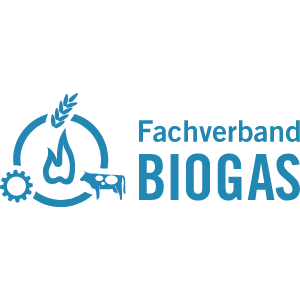Berlin, 04.07.2023
A demonstration against the position of Deutsche Umwelthilfe (DUH) on bioenergy was held in front of its Berlin headquarters on Tuesday evening. The 40 or so participants from the renewable energy sector spoke out against the DUH’s position that bioenergy should play virtually no role in the energy transition in future. “Bioenergy is stored solar energy, it is available at all times and is therefore relevant to the system,” said Hans-Josef Fell, former member of the Bundestag for the Greens and one of the fathers of the Renewable Energy Sources Act (EEG). “With regenerative plant cultivation, it even permanently removes CO2 from the atmosphere, making bioenergy an indispensable contribution to climate protection,” Fell continued. He supported the demonstration. According to the Federal Environment Agency (UBA), bioenergy accounted for around 52 percent of final energy consumption from renewables in 2022, followed by wind energy with 26 percent. Solar energy from photovoltaic and solar thermal systems contributed a further 14%, while hydropower and geothermal energy each accounted for 4%. “Bioenergy is also available in winter and during dark doldrums, especially for local heating systems, so its use must be planned wisely. However, it is a complete mystery how the DUH intends to achieve the German climate targets without bioenergy at an affordable cost,” added Johannes Lackmann, former President of the German Renewable Energy Federation (BEE), entrepreneur and initiator of the rally. “We don’t want competition with food cultivation and clear guidelines for sustainability, but anyone who excludes the existing potential of bioenergy is actively hindering the energy transition and climate protection,” said Lackmann.
According to UBA figures, renewable energies accounted for a good 20% of final energy consumption in Germany in 2022. The German government’s goal is to achieve climate neutrality by 2045. This means that all energy must come from renewable energy sources. Bioenergy can be used for heating, electricity and mobility. Farmers have always supplied food and energy. “In view of the dramatic global warming – 1.5° C will already be exceeded by 2027 – we must achieve 100% renewable energy by 2030 – so we must not ignore any climate protection option. A blanket exclusion of bioenergy is not a solution; by excluding bioenergy, the DUH is only serving the interests of the natural gas and oil industries,” said Fell. The great value of bioenergy lies in the fact that it can be used flexibly, making it an important supplement to solar and wind energy. At present, biogas plants were regularly used to supply base load electricity and often without using heat. This is the wrong approach. “Biogas plants need to shut down when wind and solar are supplying electricity and run when the wind isn’t blowing and the sun isn’t shining, then they also supply local heating for many villages in winter. Intelligent remuneration models must be found for this,” said Fell.
Claus Sauter, CEO of Verbio AG, also opposed the position of the environmental organization. He said it was annoying that DUH repeatedly argued that bioenergy, especially biofuels, was more harmful to the climate than fossil fuels due to indirect effects. In its “IPCC Special Report Climate Change and Land”, the Intergovernmental Panel on Climate Change stated that it was hardly possible to attribute indirect emissions to bioenergy. “As DUH, we cannot demand that science be listened to on the one hand and ignore the IPCC’s position on bioenergy on the other,” said Sauter.
In recent months, the DUH has argued against bioenergy on the grounds that agricultural photovoltaics have a much higher energy yield than bioenergy on the same area over the course of a year. “With solar power, we have to transfer the electricity from summer to winter with the help of storage systems. But batteries or hydrogen are too expensive for this. It would cost hundreds of billions of euros if we were to replace energy crops for biogas plants 1:1 with solar power,” said Lackmann.



